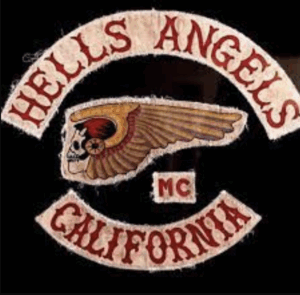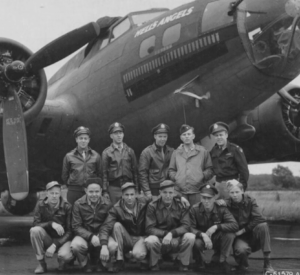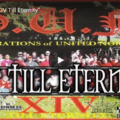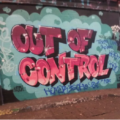
If you’re caught wearing a Hells Angel vest by a real member, there’s a good chance you’ll end up in the infirmary. Within the club, the insignia symbolizes years of loyalty, labor, and violence. The vest–or “cuts,” as members call them–carries a quasi-religious weight, signifying not just identity, but initiation.
In the aftermath of World War II, American soldiers struggled to readjust to civilian life. Many sought the adrenaline and camaraderie they’d known in combat, finding it again on the back of a bike. Motorcycle clubs became a way to channel that restless energy–a new brotherhood for men who couldn’t go back to ordinary life. The Hells Angels’ “Death Head” logo, and even the club’s name, trace back to military aviation units, a reminder that their origins lie as much in brotherhood and belonging as in rebellion.

After the Hollister Riot of 1947, the biker world split into two sides: the “99%” of law-abiding riders and the “1%” who embraced the outlaw lifestyle. The Hells Angels proudly identified themselves as part of that 1%. Their “cuts” are assembled with ritual precision: a top rocker displaying the club name, a bottom rocker marking territory, and a center patch bearing the Death Head. Prospective members earn their patches gradually, and once fully initiated, they are expected to wear them to the grave.
The club’s insularity is legendary. Members pledge allegiance to one another above all else, bound by strict codes that include a lifelong “no snitching” policy. The organization demands loyalty above family, friends, and even morality–brothers are expected to back each other, right or wrong.

There are only two sanctioned exits: “out good” or “out bad.” Those who go out bad and refuse to return their gear risk violence first and foremost–the club considers its symbols its property and will reclaim them by any means necessary. Even tattoos have, at times, been forcibly removed. Those who leave on good terms must still surrender any Hells Angels property. To outsiders, wearing Hells Angels insignia is a provocation and a violation, and the response is rarely symbolic.
The rigid code of ownership raises an uncomfortable question: who owns outlaw culture once it leaves the hands of outlaws? Yet as fiercely as the Angels guard their symbols, others have sought to preserve them.
Collectors like Bo Bushnell, who archives biker paraphernalia, walk a fine line between historical preservation and sacrilege. To historians, these artifacts document an era of American counterculture; to the Angels, they remain living symbols–sacred, dangerous, and off-limits.
The tension between cultural preservation and the sanctity of subcultural property complicates how we treat objects of rebellion. Can an artifact retain its mystique once it’s removed from the world that gave it meaning? Do outsiders have the right to preserve, or even profit from, rebellion?
Bo Bushnell has built an archive out of what many consider contraband. A collector with no ties to the club, he began with eBay finds and estate sales and now houses hundreds of original “cuts,” photographs, and personal items from outlaw motorcycle clubs, including the Hells Angels. In his view, these objects are historical evidence from a subculture that has long resisted documentation. Bushnell insists that preserving them safeguards American culture and history–not glorifying crime, but recording a movement that shaped postwar masculinity and countercultural identity.
Yet the ethics of this work are murky. The Hells Angels view their insignia as sacred property, earned rather than bought, and Bushnell’s acquisitions fundamentally challenge that belief. By displaying or digitizing them, he transforms private emblems of loyalty and violence into public artifacts, neutralizing what once made them dangerous. The same patches that demanded acts of crime and courage can now be browsed passively on a screen.
This tension mirrors broader debates over cultural ownership. When museums hold Indigenous artifacts taken from colonized territories, or when street art is cut from walls and sold for profit, we question whether preservation justifies possession. Both cases reveal how context transforms meaning–sacred items become oddities; rebellion becomes history. Bushnell’s archive asks a similar question: Does documenting outlaw culture honor it, or debase it?
In a sense, Bushnell becomes both archivist and outlaw. His collecting breaks the Angels’ code of silence, yet it also resists the erasure of a vital American subculture. The result is an uneasy preservation that transforms rebellion into heritage and property into history. Perhaps outlaw culture can only survive untouched or not at all. Whether that act is theft or tribute depends on who you believe has the right to tell, or not tell, the story.








Very poignant and timely